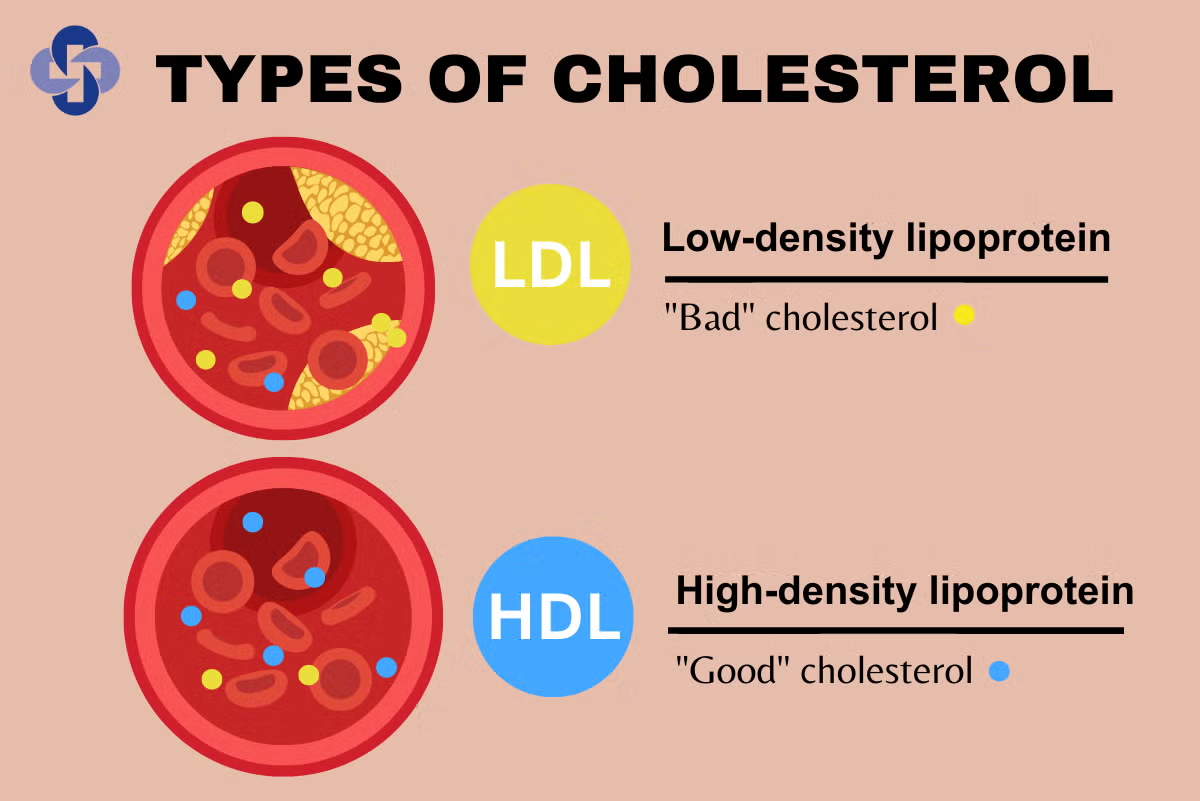Cholesterol is a lipid molecule essential for various bodily functions, including the formation of cell membranes, hormone production, and digestion. While it is vital for health, elevated cholesterol levels can lead to serious cardiovascular diseases. Understanding the normal range for cholesterol levels is crucial for maintaining heart health, especially in Singapore, where lifestyle and dietary habits can influence these levels.
Understanding Cholesterol and Its Types
Cholesterol circulates in the blood, carried by lipoproteins. The primary types include:
-
Low-Density Lipoprotein (LDL): Often termed “bad” cholesterol, LDL transports cholesterol to tissues. Excessive LDL can lead to plaque buildup in arteries, increasing the risk of heart disease.
-
High-Density Lipoprotein (HDL): Known as “good” cholesterol, HDL carries cholesterol away from the arteries to the liver for excretion, thereby reducing heart disease risk.
-
Triglycerides: A type of fat in the blood, high levels of which can also elevate the risk of cardiovascular diseases.
Normal Cholesterol Levels in Singapore
In Singapore, healthcare guidelines provide specific reference ranges for cholesterol levels to assess cardiovascular risk. These ranges are measured in millimoles per litre (mmol/L).
-
Total Cholesterol:
- Desirable: Less than 5.2 mmol/L
- Borderline High: 5.2 – 6.1 mmol/L
- High: 6.2 mmol/L and above
-
LDL Cholesterol:
- Optimal: Less than 2.6 mmol/L
- Desirable: 2.6 – 3.3 mmol/L
- Borderline High: 3.4 – 4.0 mmol/L
- High: 4.1 – 4.8 mmol/L
- Very High: 4.9 mmol/L and above
-
HDL Cholesterol:
- Low: Less than 1.0 mmol/L
- Desirable: 1.0 – 1.5 mmol/L
- High: 1.6 mmol/L and above
-
Triglycerides:
- Optimal: Less than 1.7 mmol/L
- Desirable: 1.7 – 2.2 mmol/L
- High: 2.3 – 4.4 mmol/L
- Very High: 4.5 mmol/L and above
These reference values are aligned with the Ministry of Health’s Clinical Practice Guidelines in Singapore.
Factors Influencing Cholesterol Levels
Several factors can affect an individual’s cholesterol levels:
-
Diet: Consumption of saturated and trans fats, commonly found in red meat, processed foods, and certain dairy products, can raise LDL cholesterol levels.
-
Physical Activity: Regular exercise can help increase HDL cholesterol while lowering LDL cholesterol and triglycerides.
-
Weight: Being overweight or obese is associated with higher LDL cholesterol and triglyceride levels and lower HDL cholesterol.
-
Age and Gender: Cholesterol levels tend to rise with age. Men are generally at a higher risk earlier in life, but women’s risk increases and can surpass that of men after menopause.
-
Genetics: A family history of high cholesterol can predispose individuals to similar issues, regardless of lifestyle.
Managing Cholesterol Levels
Maintaining healthy cholesterol levels involves a combination of lifestyle modifications and, when necessary, medical interventions.
-
Dietary Changes:
- Reduce Intake of Unhealthy Fats: Limit foods high in saturated and trans fats.
- Increase Fiber Intake: Foods rich in soluble fiber, such as oats, fruits, and vegetables, can help lower LDL cholesterol.
- Incorporate Omega-3 Fatty Acids: Found in fatty fish like salmon, omega-3s can reduce triglyceride levels.
-
Regular Physical Activity:
- Aim for at least 150 minutes of moderate-intensity aerobic exercise per week, such as brisk walking or cycling.
-
Weight Management:
- Achieving and maintaining a healthy weight can improve cholesterol levels and overall heart health.
-
Smoking Cessation:
- Quitting smoking can improve HDL cholesterol levels and reduce the risk of heart disease.
-
Medication:
- In cases where lifestyle changes are insufficient, doctors may prescribe medications such as statins to help lower cholesterol levels.
Regular Monitoring and Consultation
Regular cholesterol screenings are essential, especially for individuals over 40 or those with risk factors like a family history of heart disease. Early detection and management can significantly reduce the risk of cardiovascular events. Consulting with healthcare professionals allows for personalized advice and treatment plans tailored to individual needs.
Conclusion
Understanding and maintaining normal cholesterol levels is a vital aspect of cardiovascular health. In Singapore, adhering to the established reference ranges and implementing proactive lifestyle choices can help manage cholesterol effectively. Regular consultations with healthcare providers ensure that individuals receive appropriate guidance and interventions, fostering a heart-healthy community.
References
-
SingHealth. (n.d.). Cholesterol: LDL, HDL & Management. Retrieved from
-
Singapore Heart Foundation. (n.d.). Cholesterol Levels. Retrieved from
-
Health Promotion Board. (n.d.). Results Guidelines Chronic Disease Reference Range (Abnormal).

Leave a Reply